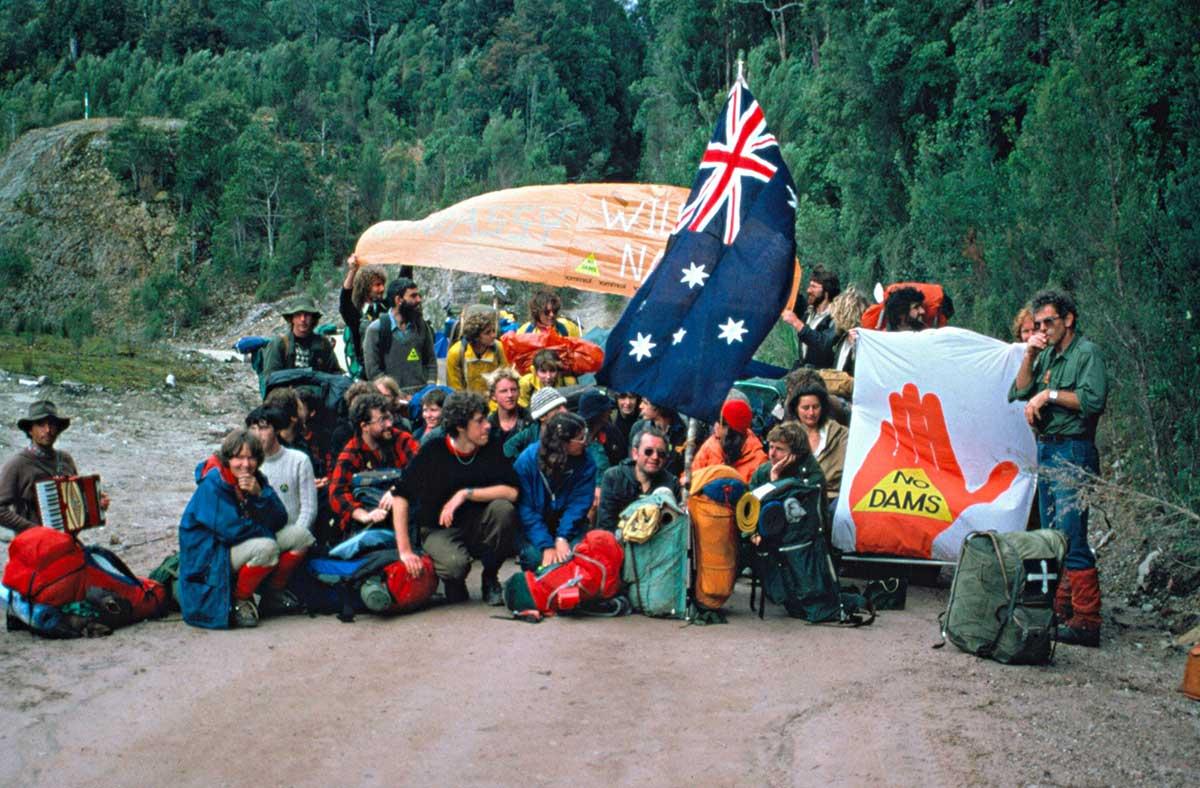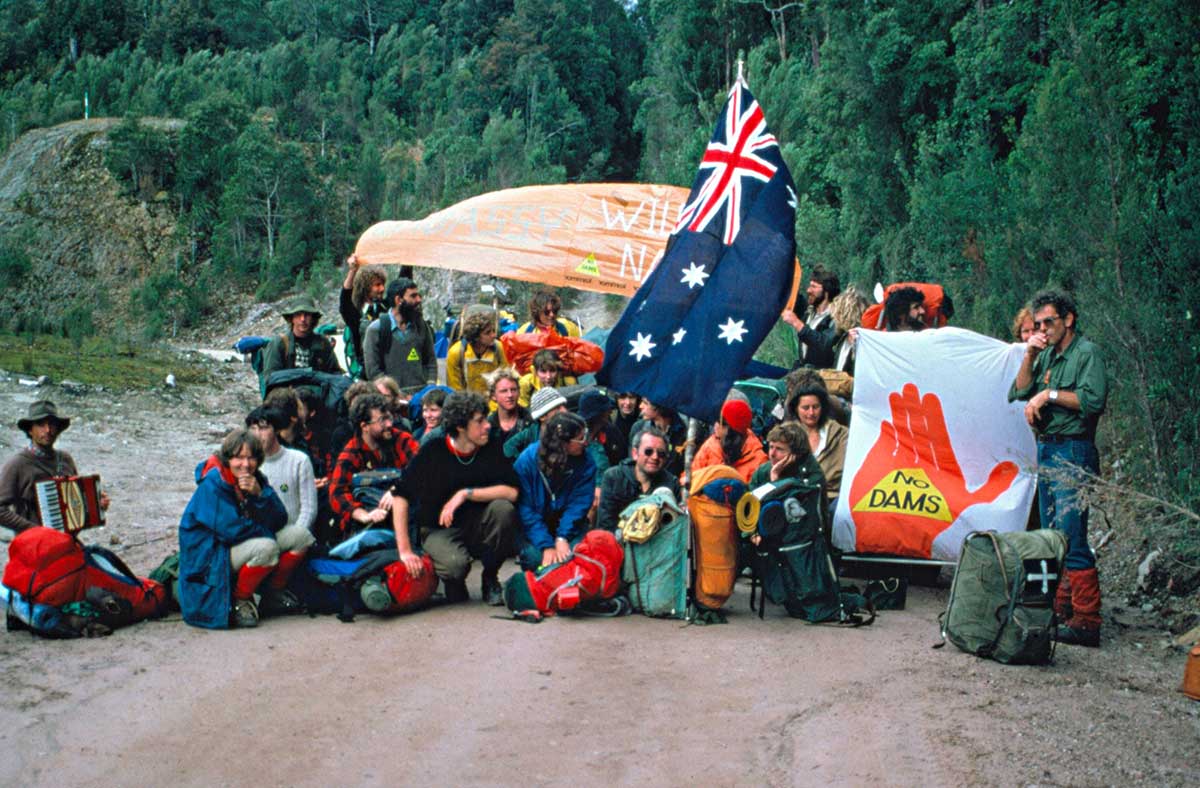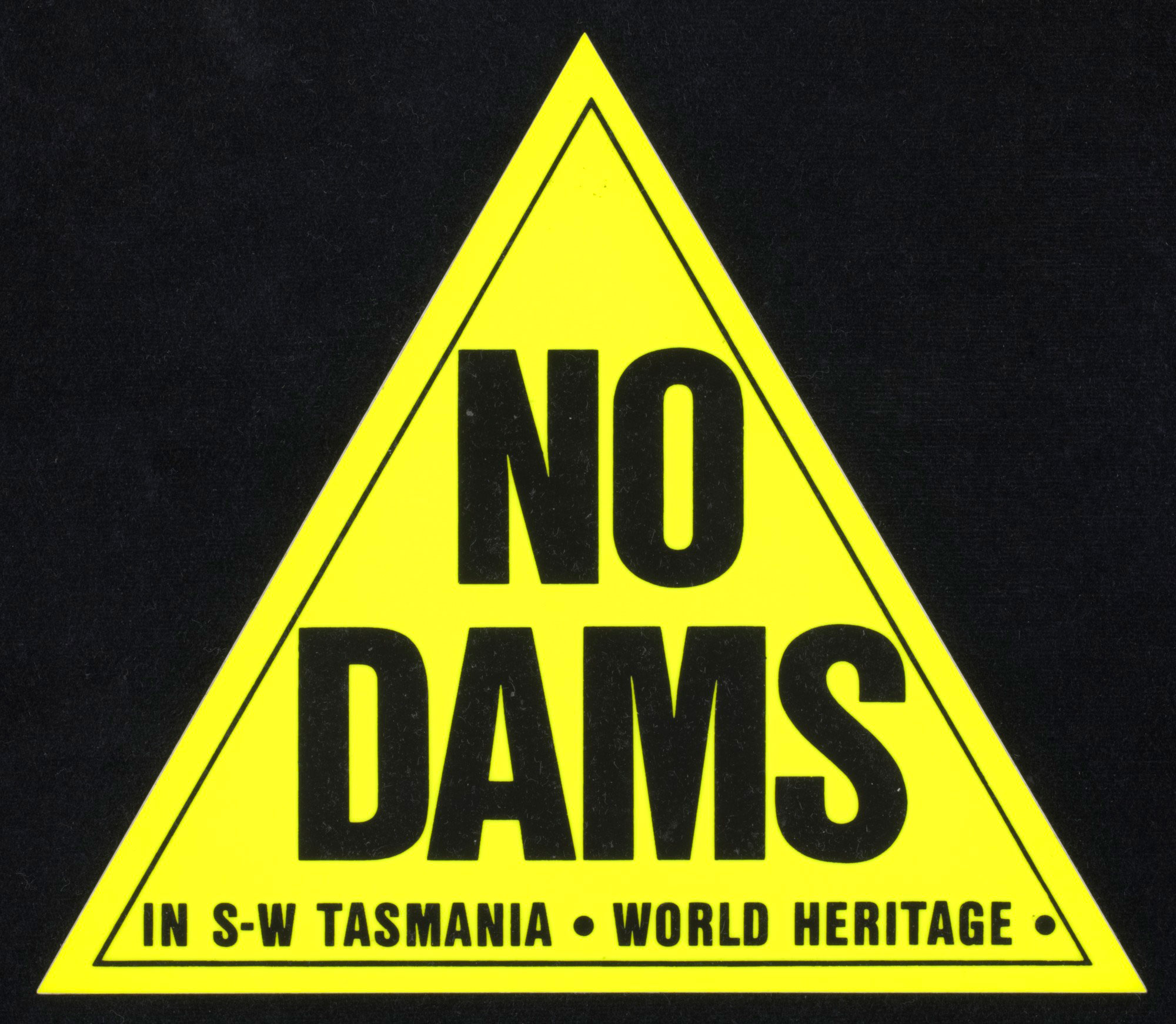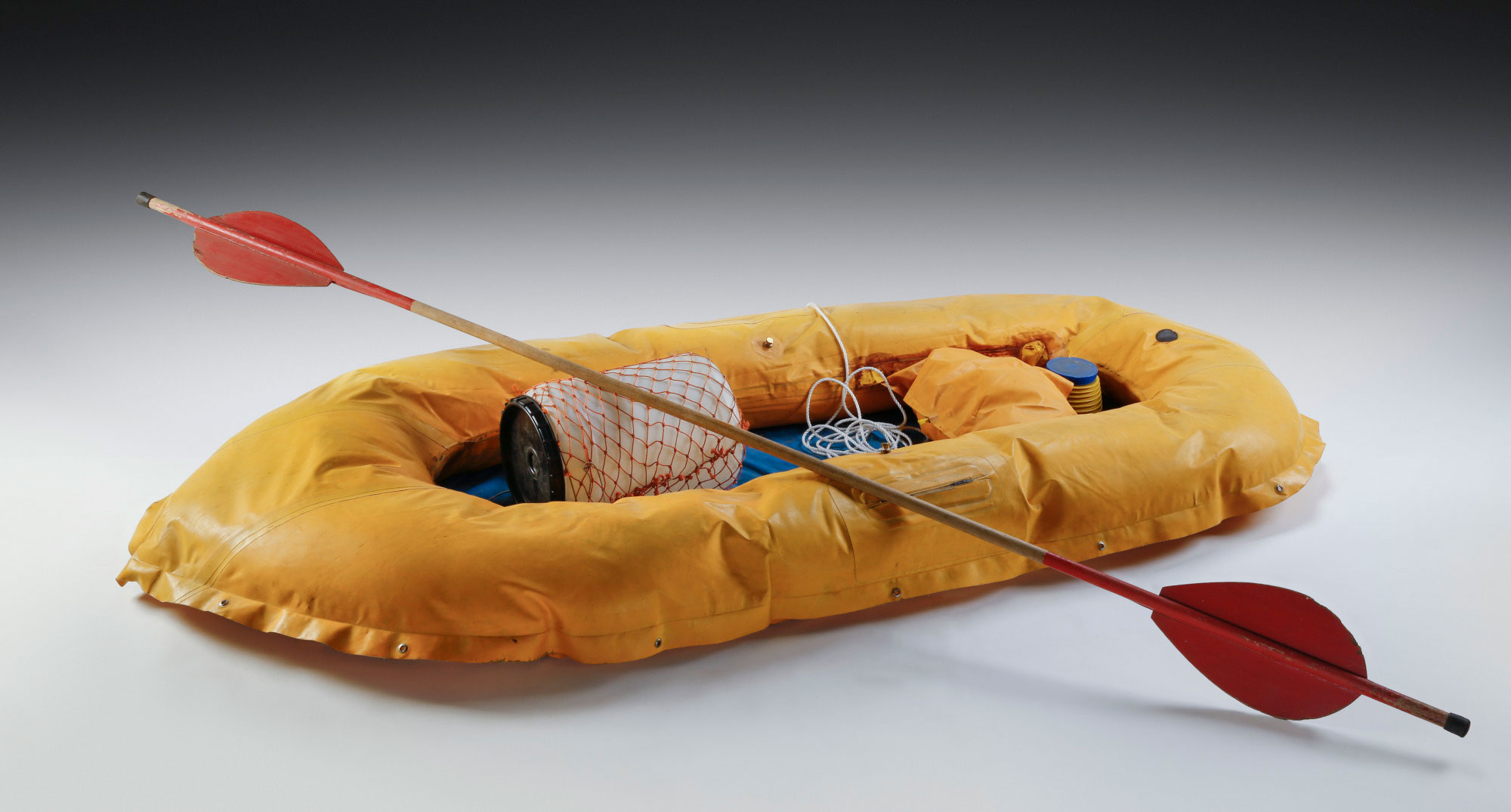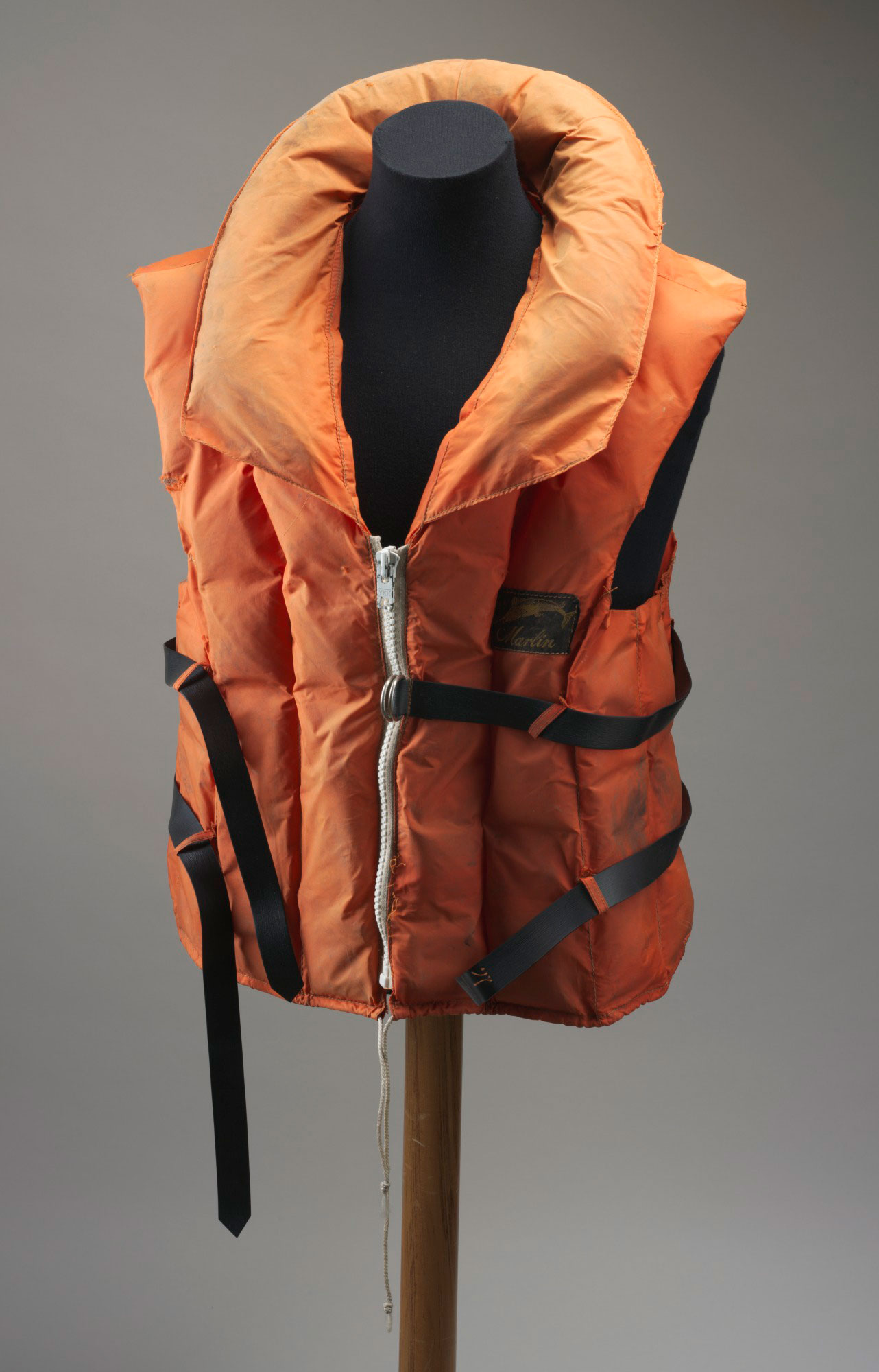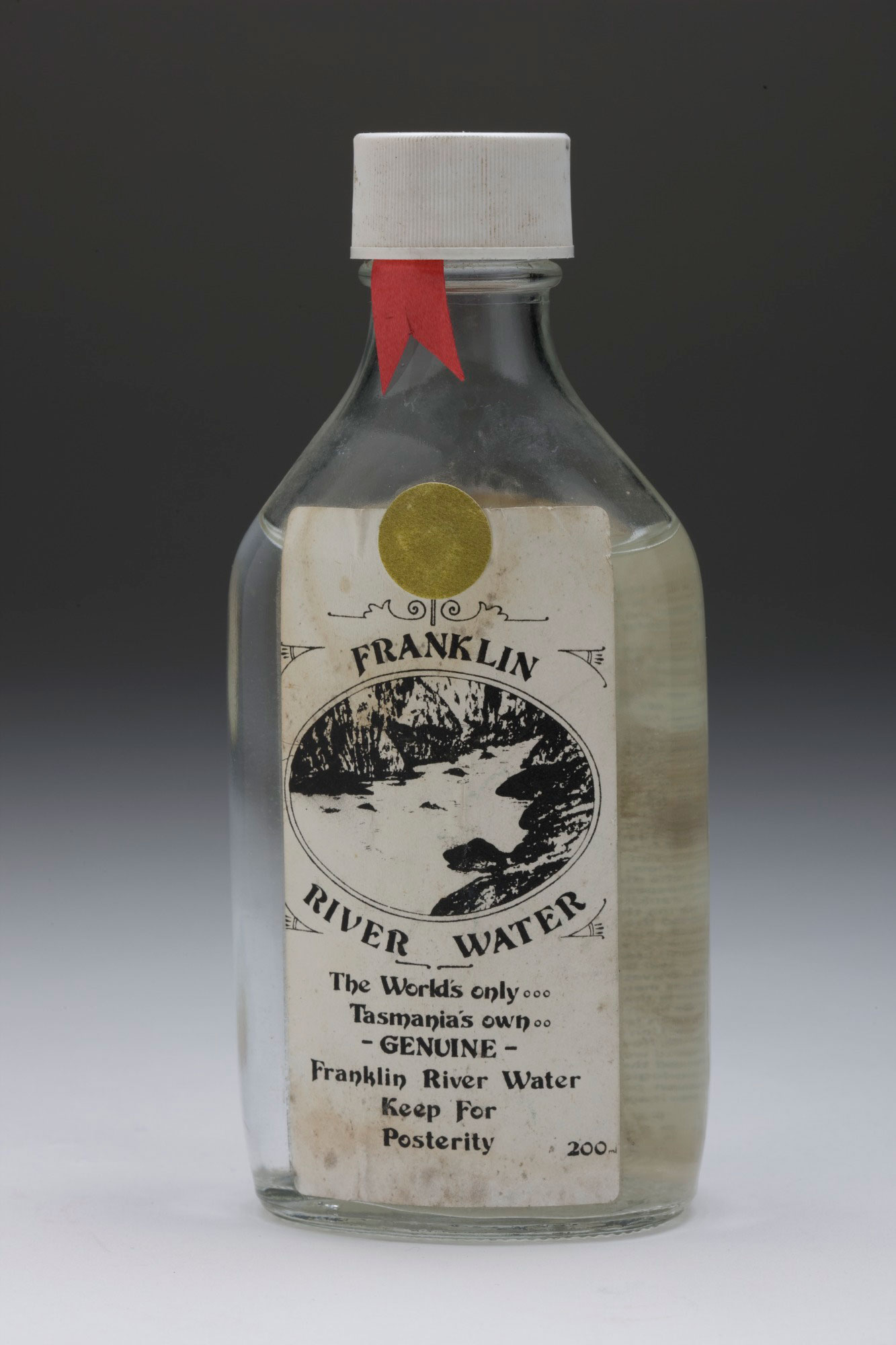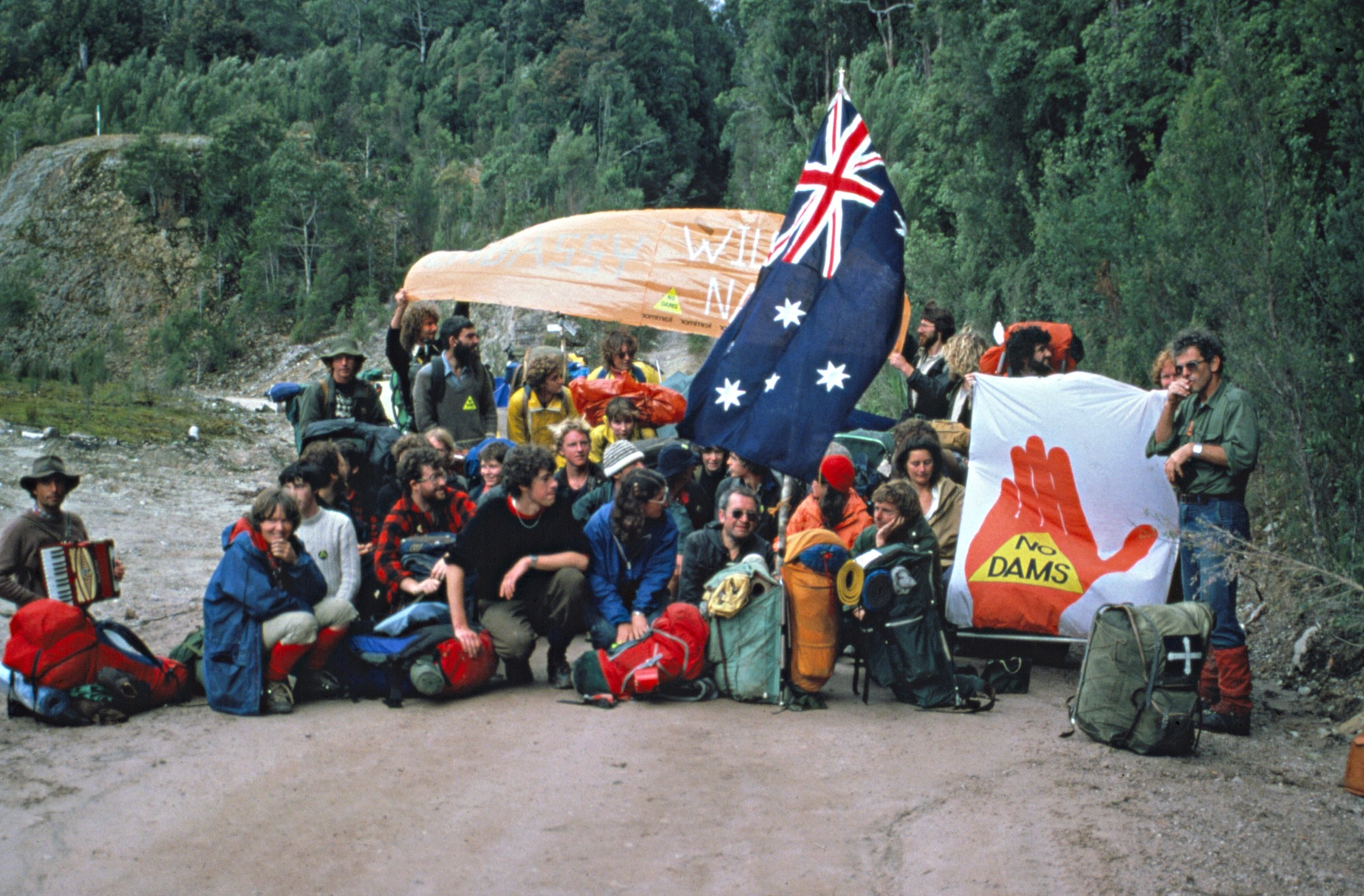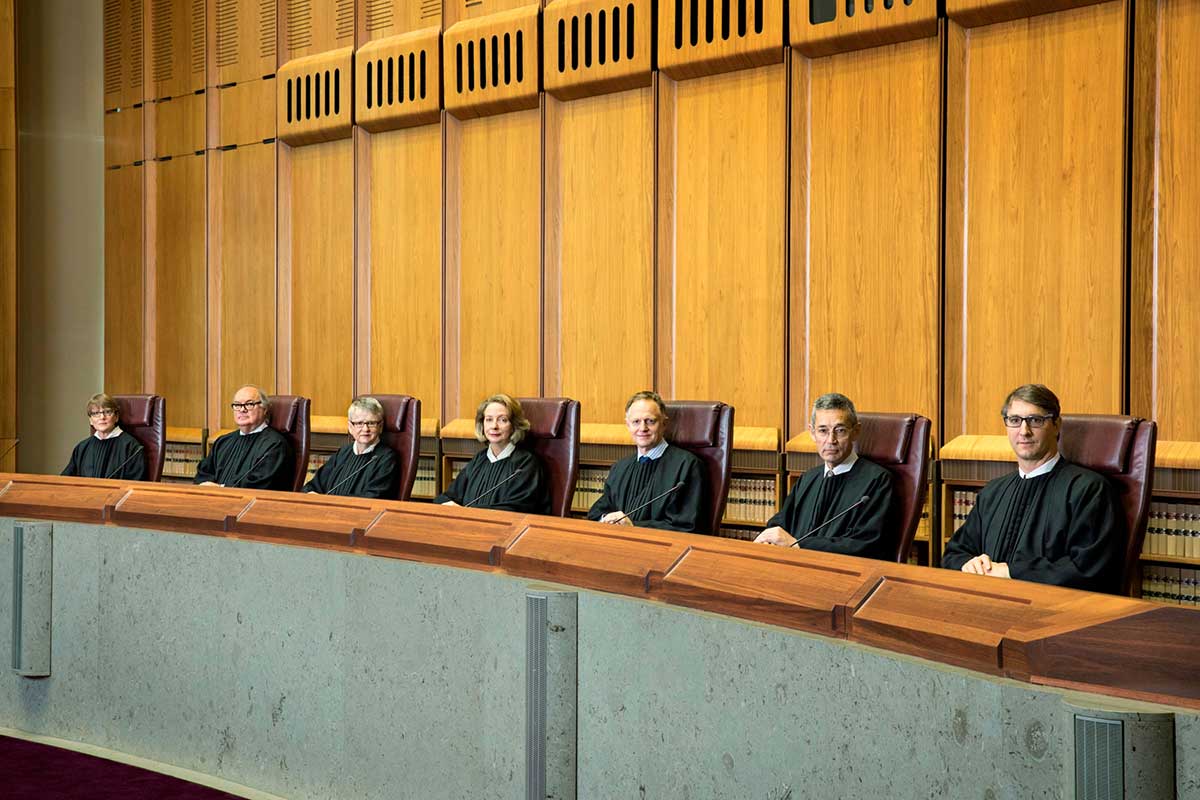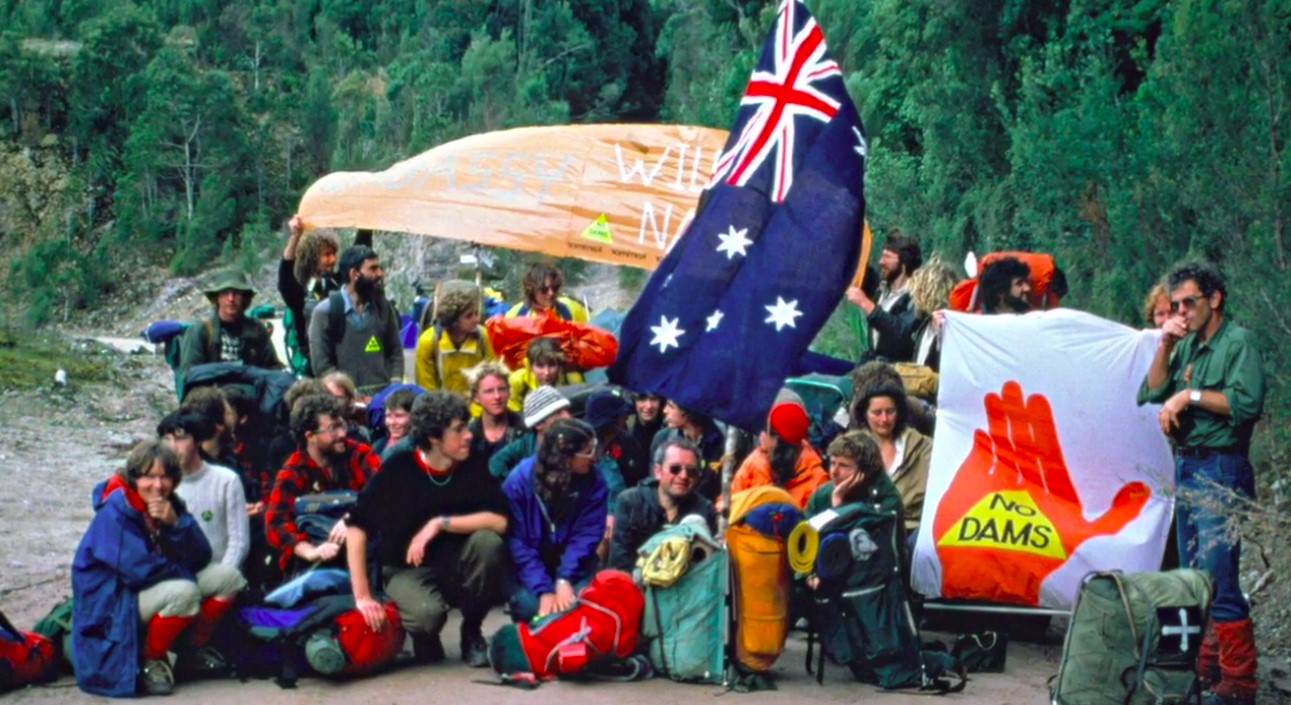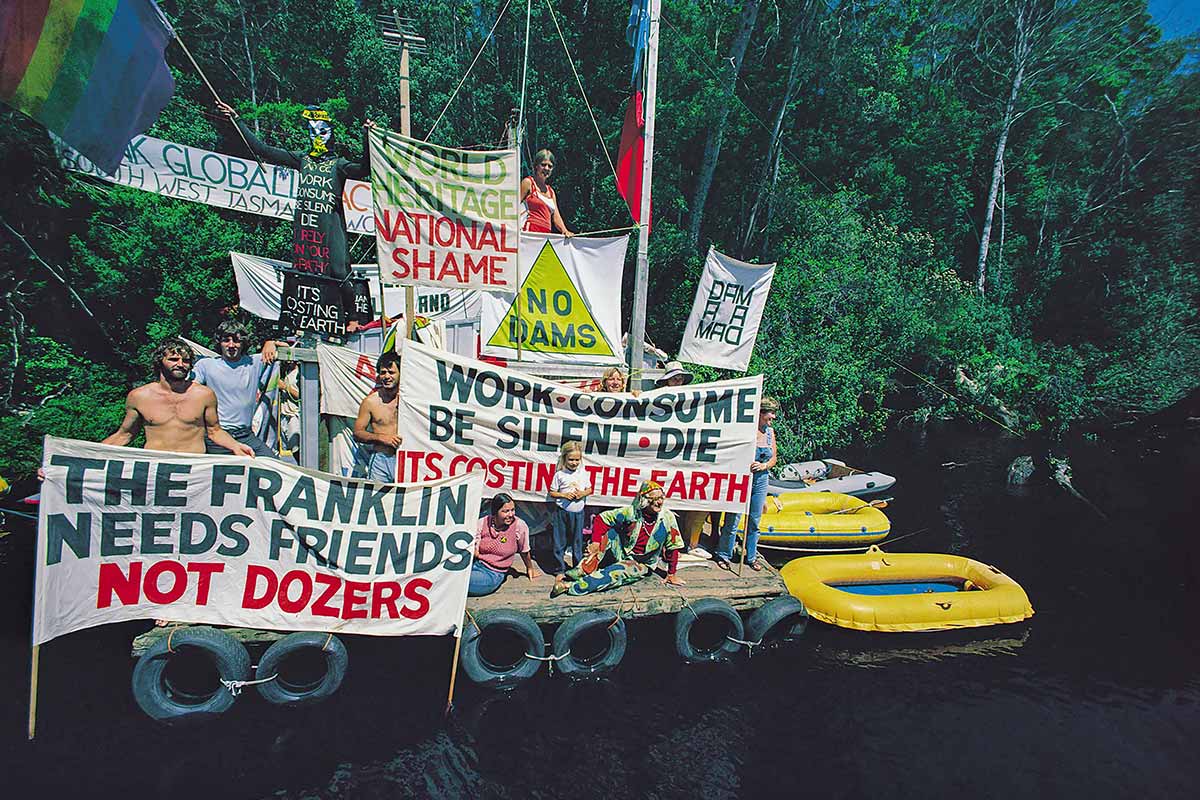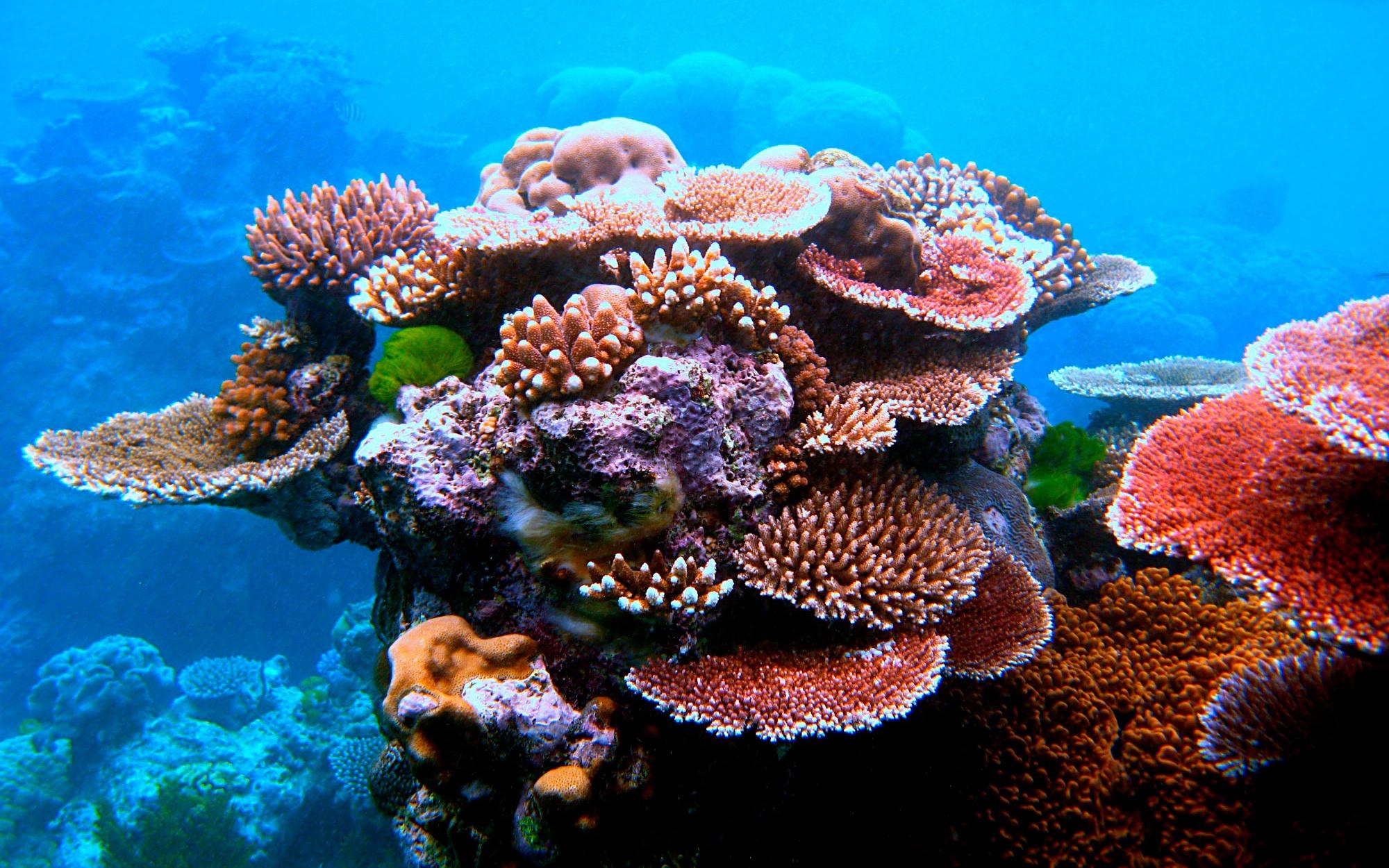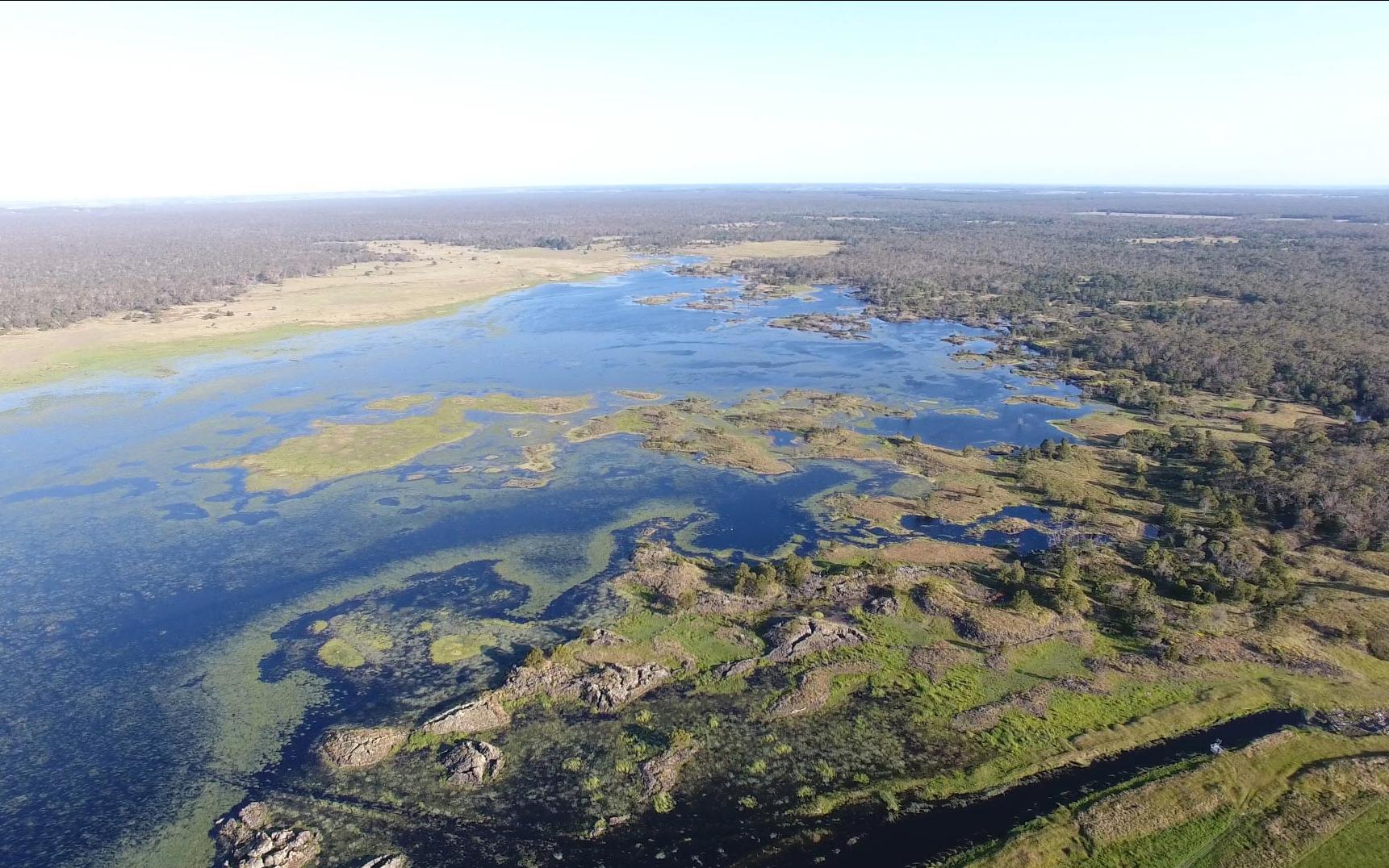Fight for the Franklin
1982: Protests against the Franklin Dam in Tasmania lead to the formation of the Greens
Fight for the Franklin
1982: Protests against the Franklin Dam in Tasmania lead to the formation of the Greens
In a snapshot
In 1982 protesters and environmental activists led a campaign to stop the damming of the Franklin River in Tasmania. This action saved a key wilderness area and raised awareness of environmental issues. The political success of the environmental groups involved eventually led to the formation of the Greens as a political party at the Federal level.
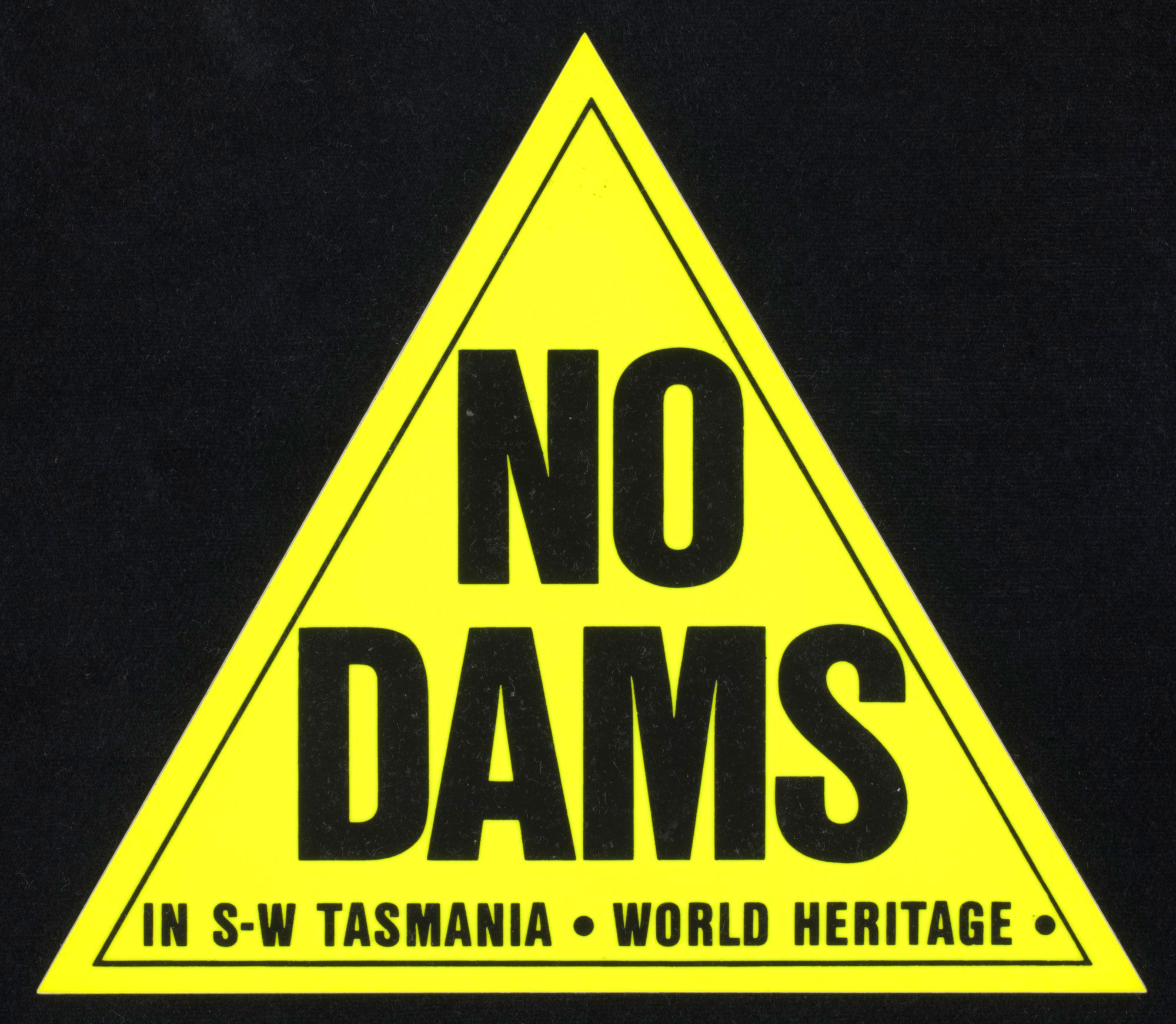
 Can you find out?
Can you find out?
1. What happened to Lake Pedder, and why was this important before the Franklin Dam protest?
2. Why did the Wilderness Society oppose the building of a dam on the Gordon River?
3. How did the campaign to protect the Franklin finally succeed?
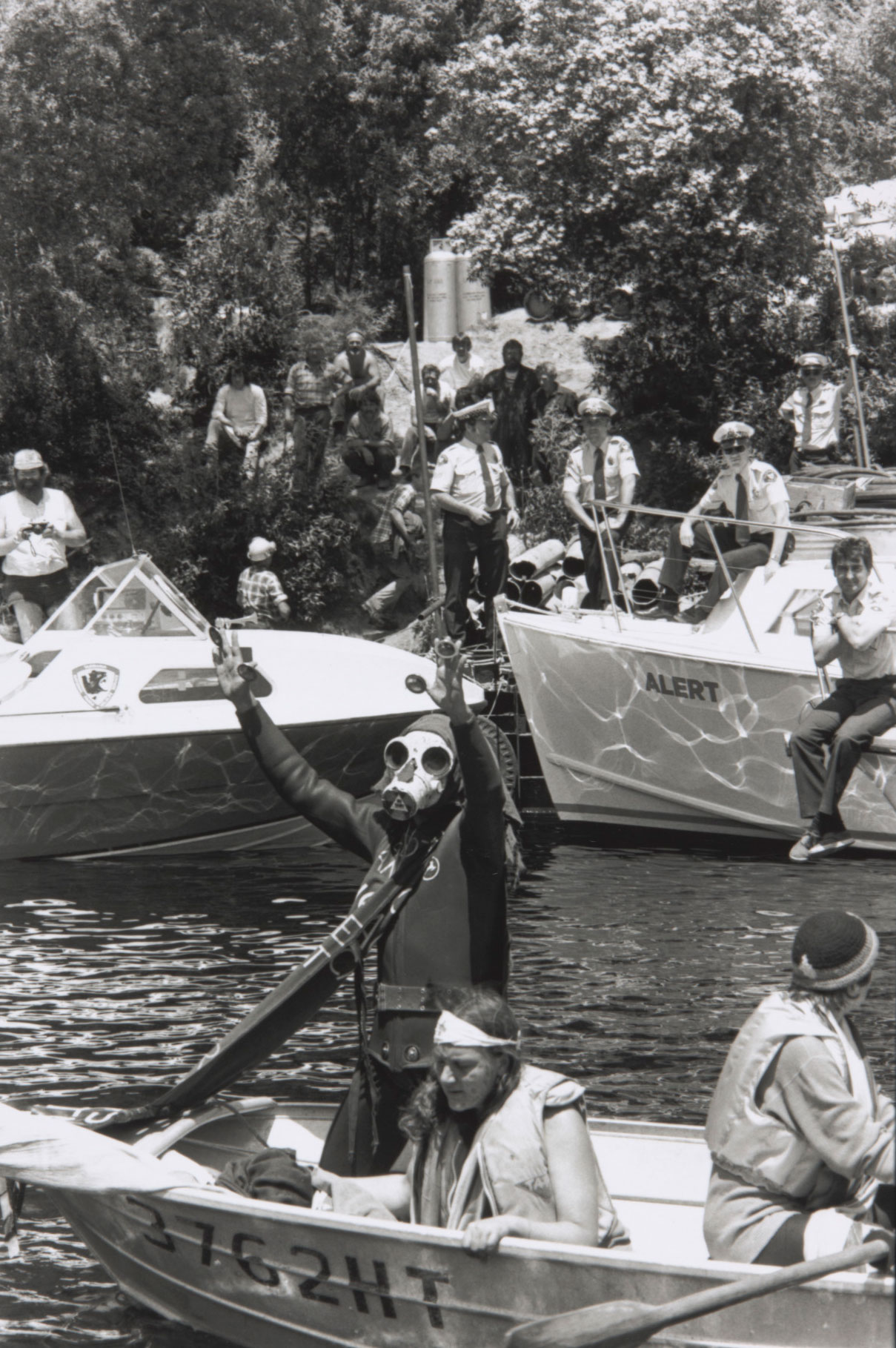
How did protests against Tasmanian dams begin?
In 1972 the Tasmanian Government gave the Hydro-Electric Commission of Tasmania permission to build dams on both the Serpentine and Huon rivers. The damming of these rivers flooded the natural basin of Lake Pedder and led to extensive environmental damage.
Environmental groups protested and lobbied politicians to try to stop the dams from being built, but were not successful. In 1976 some of these activists, including Dr Bob Brown, created the Tasmanian Wilderness Society. The Society campaigned against deforestation, mining and road building in wilderness areas.
How was the Franklin Dam conflict sparked?
In 1978 the Hydro-Electric Commission proposed that another dam be built on the Gordon River. This dam would generate cheap hydroelectricity and create new jobs in Tasmania, but it would also flood the nearby Franklin River and the wilderness area around it.
Environmental groups, including the Wilderness Society, lobbied the Tasmanian Government to protect the environment and stop the dam. They argued this new dam would destroy the habitat of endangered species as well as important First Nations rock art. In 1980 about 10,000 people marched through the streets of Hobart protesting against the proposed dam.
In early 1982 the newly elected Tasmanian Liberal Party decided to go ahead with the dam. Activists asked the Australian Government to step in and stop the dam, but it refused.
How did protesters draw attention to their campaign?
The campaign to save the Franklin grew during 1982. Bob Brown and other members of the Wilderness Society travelled around Australia to raise public awareness.
In December 1982 Brown and the Wilderness Society led a blockade of the Franklin River, which lasted until March 1983. During the blockade protesters stopped the Hydro-Electric Commission and its workers from entering the dam work site. Around 2500 people took part in the blockade. About 1400 of those people were arrested, and some were sent to goal, including Bob Brown.
At the same time, the wilderness area around the Franklin River was listed as a protected UNESCO World Heritage Site. But the Australian Government still refused to step in and stop the Tasmanian Government from building the dam.
Research task
Watch the short video called 1982: Franklin Dam Protests
(a) Does the video support what you’ve found out about the Franklin Dam campaign in this summary?
(b) Was there any other information that you found interesting? If so, what was it?
‘All up, some 6,000 people registered to help, nearly 1,500 protectors of the wilderness were arrested and 600 went in paddy wagons across the island, overnight, to Risdon Prison.’
Bob Brown, in his foreword to Alice Hungerford's UpRiver
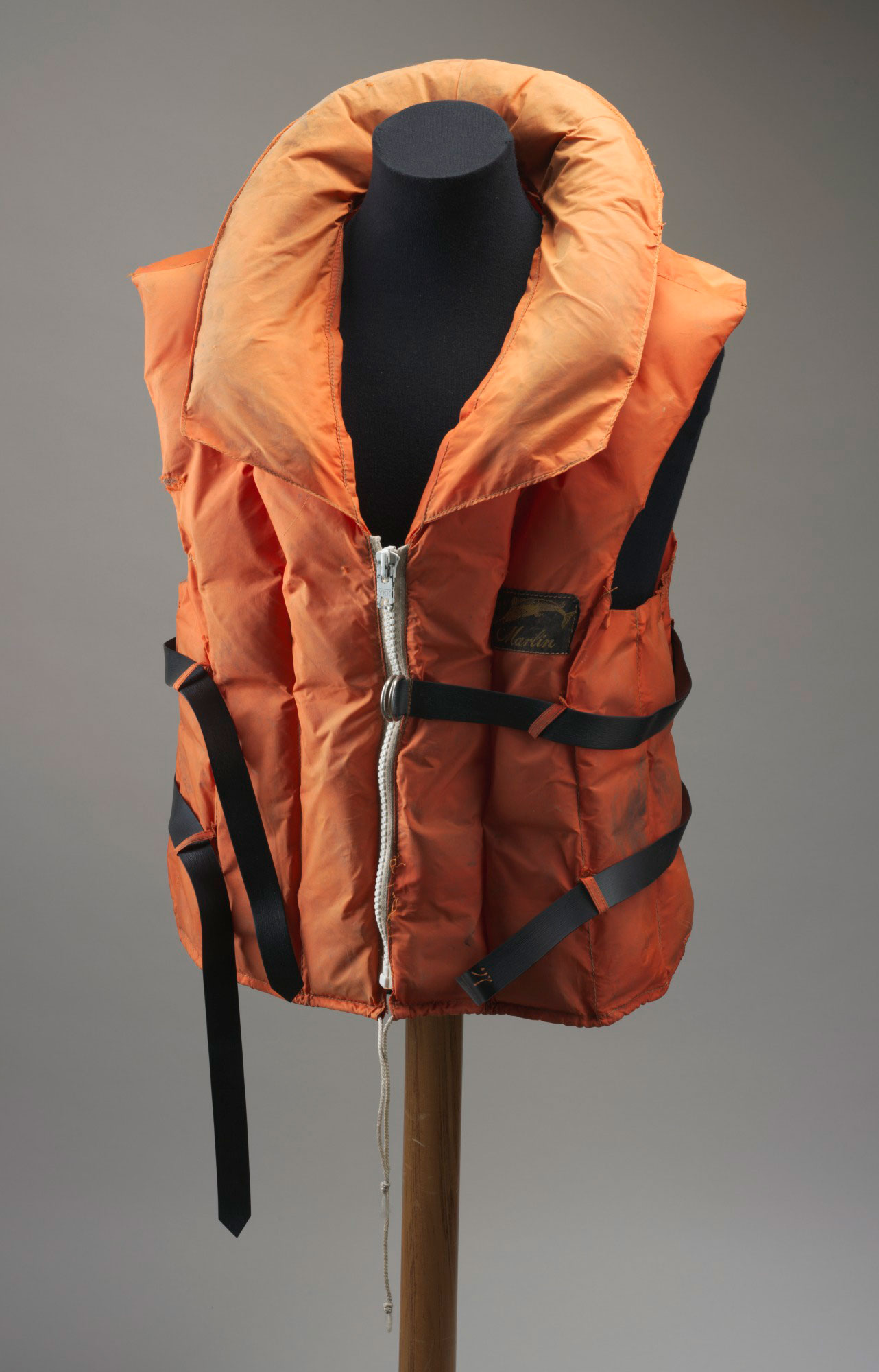
How was the Franklin River protected?
In March 1983 the Australian Government changed when the Labor Party, led by Bob Hawke, was elected. The Hawke government opposed the dam and introduced legislation to protect the Franklin River.
When the Tasmanian Government refused to stop work on the dam, the Australian Government took the case to the High Court. The Australian Government won, forcing the Tasmanian Government to abandon the Franklin Dam project.
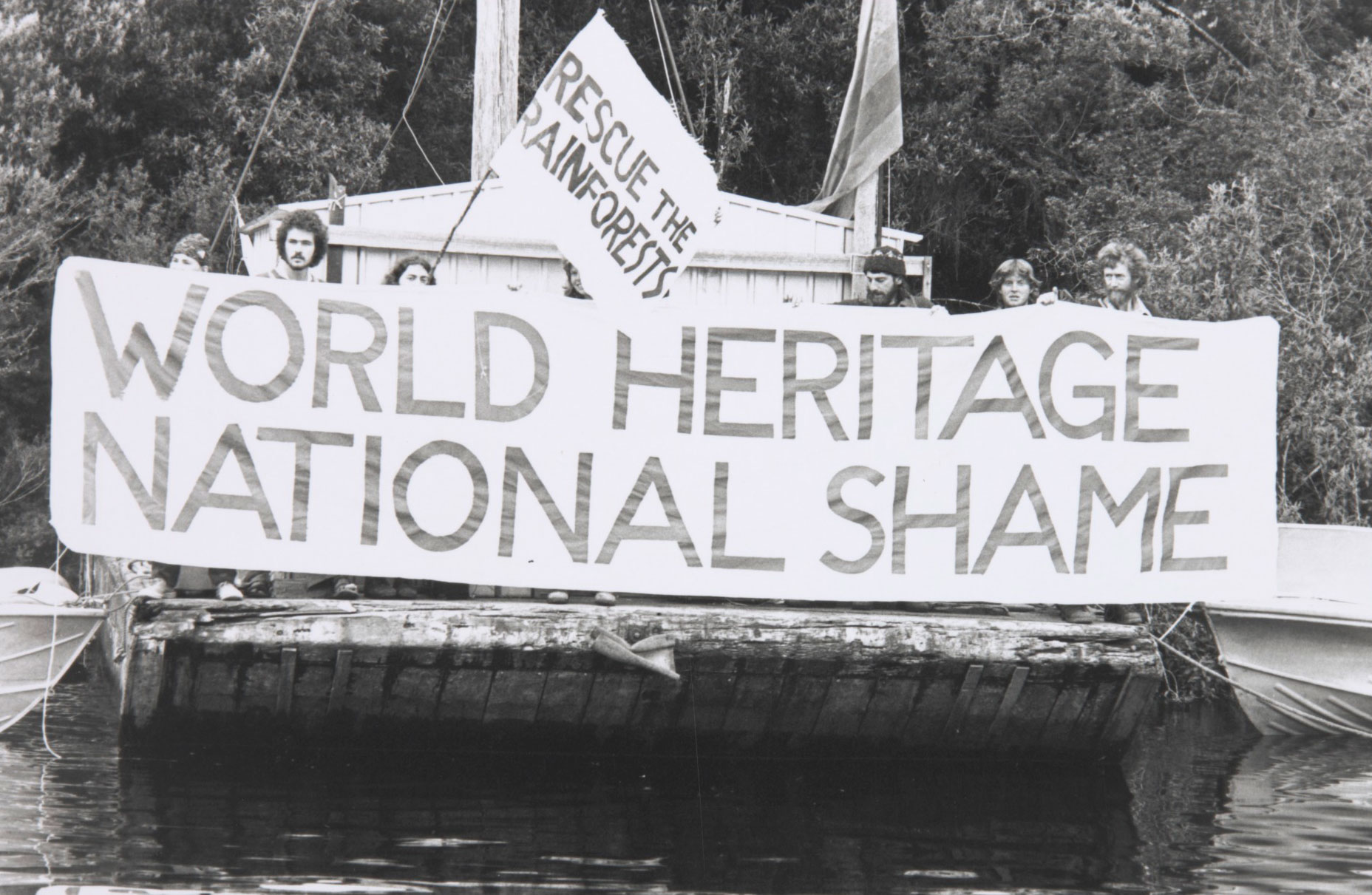
What is the legacy of the Franklin River campaign?
The campaign to save the Franklin River led to a greater awareness of environmental issues throughout Australia. It also helped to bring environmental activists together to create political parties.
During the 1980s ‘green’ political parties had formed in most Australian states. Green parties are particularly concerned with protecting the environment. In 1992 the New South Wales, Tasmanian and Queensland Greens parties agreed to form a national Greens Party, led by Bob Brown. The Greens are now the third most popular national political party in Australia.
Read a longer version of this Defining Moment on the National Museum of Australia’s website.
Research task
Visit the UNESCO World Heritage List website.
(a) Find Australia. Can you see the Franklin Dam area listed? Hint: It has another name in this list.
(b) How many natural and cultural world heritage sites does Australia currently have?
 What did you learn?
What did you learn?
1. What happened to Lake Pedder, and why was this important before the Franklin Dam protest?
2. Why did the Wilderness Society oppose the building of a dam on the Gordon River?
3. How did the campaign to protect the Franklin finally succeed?






